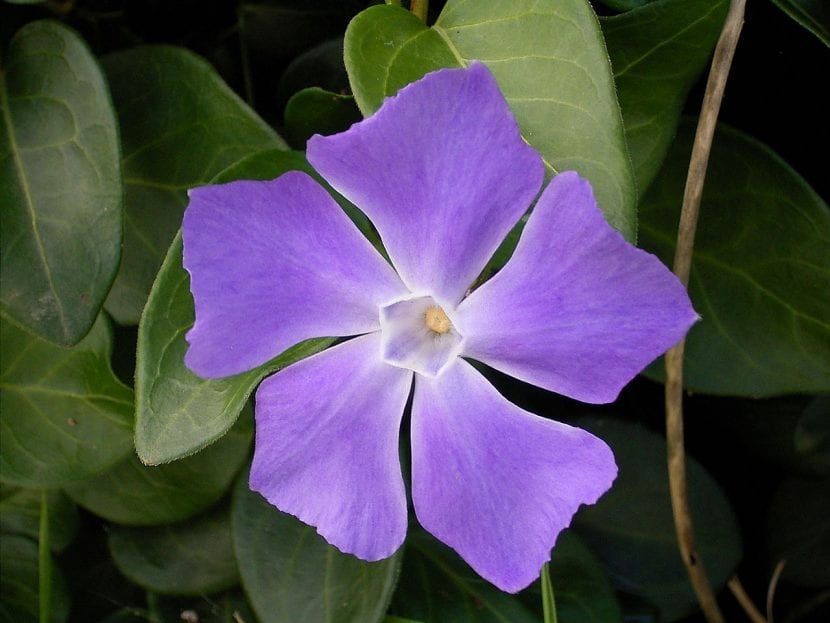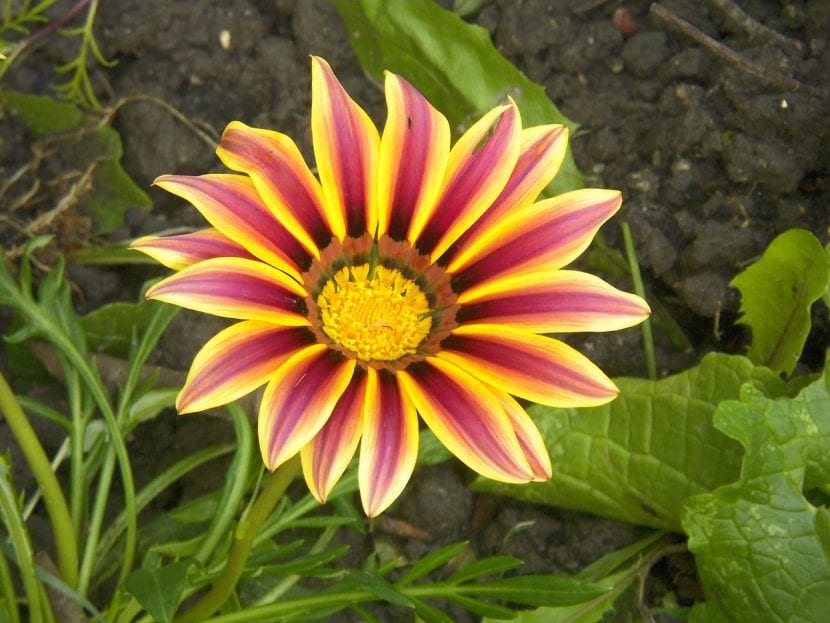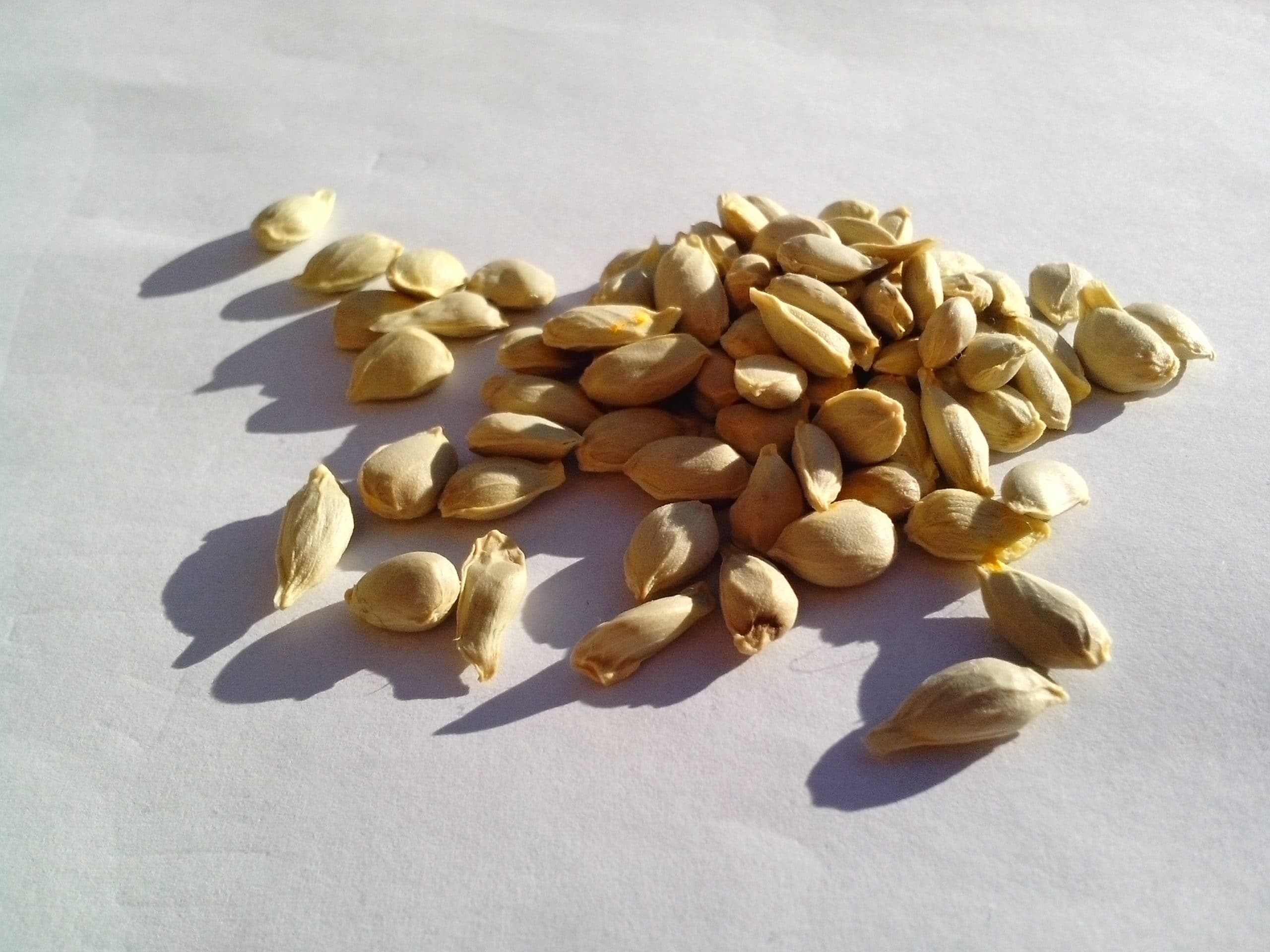
vinca major
Do you know what a perennial is? Surely you have seen one more than once, or you may even have it in your garden or in a pot. This type of vegetable is the most abundant. Blooms year after year for several seasons, producing petals of very cheerful colors to attract pollinators, who will be in charge of passing the pollen from one flower to another.
If you would like to know what its characteristics are, then I will explain you what is a perennial plant.
What is it?

Gazania freezes
A perennial plant, also called a perennial plant, is the one who lives more than two years. It does not usually form a permanent woody tissue, but usually produces herbaceous stems. Your root system is prepared to absorb water and nutrients from the soil more easily than a annual cycle plant (living one year) or bi-annual (two years).
In hot climates they can grow continuously, but in climates where there are well differentiated seasons they will only do so in the warmer months.. For example, in those areas where frosts occur regularly, it grows and flowers only during spring and especially in summer; On the other hand, if the temperatures remain mild, it can flourish month after month. New growth arises through tissue or from a rhizome.
It is not to be confused with the term evergreen, which refers to the foliage and not the plant itself.
Classification
Depending on their growth, we have perennials of various types:
Bulbous
Bulbous plants, although many of them only appear to be alive for a few weeks or a few months out of the year, are actually considered perennials. Why? Well, because the bulb is a living organ 🙂. During the vegetative season, that is, when the leaves sprout and grow, roots that are responsible for absorbing all the nutrients arise from these organs that are usually found underground. they need.
In order to multiply, what they do is produce seeds and, also, little bulbs that are 'born' from the larger bulbs.
Examples
There are many bulbous plants in the world, but we are going to keep these three:
- Tulipa sp (Tulip)
- Allium ampeloprasum (Leek)
Perennial herbaceous
Perennial herbaceous plants are those that are not lacking in any garden or orchard. They are characterized by developing green stems (sometimes reddish or yellowish) at a fairly rapid rate, and flowers that often have interesting ornamental value. Its height varies greatly depending on the species, being able to measure only 20 centimeters or reach one meter.
The most common way to multiply is by seeds, which when falling on the ground germinate if the conditions are appropriate; that is, if it is kept humid and the springs and autumns are mild.
Examples
If you want to know which ones there are, take a look at our selection of the three that are easiest to take care of:
- Gazania rigens (Gazania)
- Echinacea purpurea (Echinacea)
- Dianthus barbatus (Poet's Carnation)
Perennial shrubs and subshrubs
Normally, a conventional shrub is not included in the classification of perennials. It is true that they are plants that live for more than two years, but when we speak of 'perennials' we refer more to herbaceous plants. Even so, there are some shrubs and especially subshrubs that are included, since they develop slightly lignified stems, of soft wood.
En general, these perennials are small, rarely exceeding half a meter (although there are exceptions, such as lavender essence , that if it is left it can touch the subway without problems), and easy to care for.
Examples
Some of them are:
- Thymus communis (Thyme)
- Lavandula dentata (Lavender)
- Vaccinium oxycoccos (Lingonberries) // Image - Wikimedia / Espirat
How are perennials cared for?
To finish this article, I am going to tell you what are the basic care that you should provide to your perennials:
Location
Whenever possible, have them outside, in a very bright area. Many of them, like carnations or lavender, want direct sun in order to grow well.
Earth
- Flower pot: it will be enough to mix universal substrate (on sale here) with a little perlite (for sale here) or similar.
- Garden: they grow in a wide variety of soils, provided they have good drainage.
Irrigation

vinca major
The frequency of irrigation will vary depending on the climate and the plant itself. For instance, during hot, dry summers, watering will be required more often than in winter. So so that there are no problems, it is highly recommended to check the humidity of the substrate or soil by inserting a thin wooden stick.
Subscriber
During the growing and flowering season It is interesting to pay with organic fertilizers, such as guano (for sale here), following the indications specified on the package.
Multiplication
If you want to get new specimens of your perennials, you can multiply them by seeds, or if you have them, by separating bulbs or dividing rhizomes or tubers. Let's see how to do it:
Seeds
The seeds I advise sowing them in seedling trays (like this one they sell here), putting a maximum of two in each alveolus. It is a way of achieving more controlled germination, and that more plants reach adulthood.
Cover them with a thin layer of substrate, keep watered, and in about 10 to 20 days they will germinate.

Separation of bulbs, rhizomes, or tubers
To separate them you have to wait for the plant to rest; that is, shortly after they bloom. Then, you just have to expose the underground organs (bulbs, rhizomes or tubers, as the case may be), and with the help of a previously disinfected saw knife or scissors, proceed to separate or divide them.
Then you will only have to plant them in individual pots, and water.
Planting or transplanting time
It will depend on the type of plant, but most of them are planted or transplanted in spring. There are exceptions, such as bulbous that bloom in spring (hyacinths, tulips, daffodils, etc.) to be planted in fall / winter.
Rusticity
Again, depends. There are some, like lavender, that can endure up to -7ºC, but red cranberries support a little more cold, down to -10ºC.
If you have questions, contact us.

Lavandula
Thus, you can always show off them 🙂.








